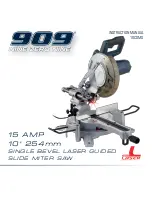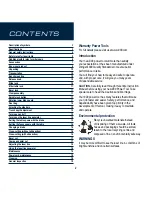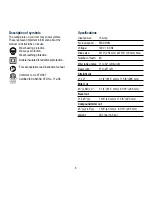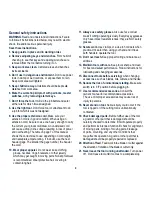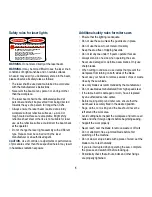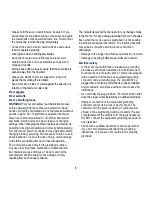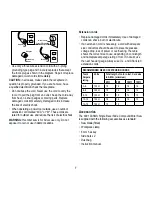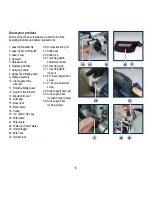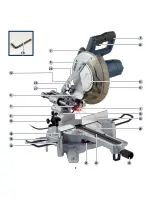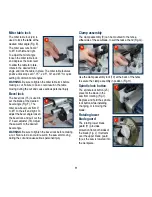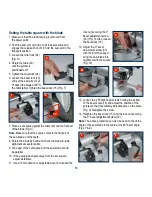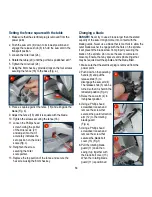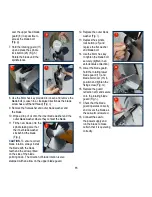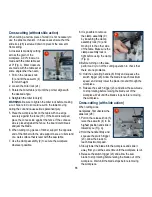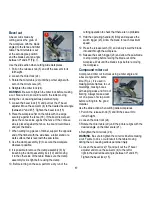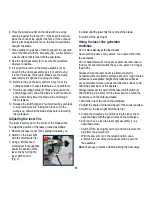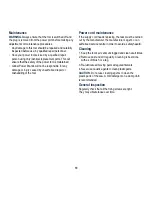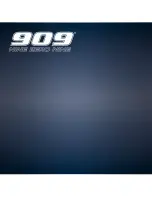
6
•
Always hold the saw on parts that are insulated. If you
accidentally cut into hidden wiring or the saw’s own cable,
the metal parts of the saw will become ‘live’. Switch off at
the mains and remove the plug immediately.
•
Connect the saw to a dust collection device and ensure
that it is operated properly.
•
Wear gloves when handling saw blades.
•
Keep the floor area around the machine level, well
maintained and free of loose materials such as wood
chips and cut-offs.
•
During slide cutting, always ensure that the saw blade is
pushed away from the operator.
•
Always use stands to provide support for long work
pieces that overhang the turntable.
•
Feed work into a blade or cutter against the direction of
rotation of the blade or cutter only.
Wear goggles
Wear earmuffs
Wear a breathing mask
WARNING!
For your own safety read instruction manual
before operating miter saw. Wear eye protection. Keep
hands out of path of saw blade. Do not operate saw without
guards in place. Do not perform any operation freehand.
Never reach around saw blade. Turn off tool and wait for
saw blade to stop before moving workpiece or changing
settings. When changing the blade, replace and secure all
guarding to its original position and correctly before starting
tool. Disconnect power (or unplug tool as applicable) before
changing blade or servicing. Do not expose to rain or use in
damp locations. To reduce the risk of injury, return carriage
to the full rear position after each crosscut operation.
The tool must be used only for its prescribed purpose.
Any use other than those mentioned in this Manual will
be considered a case of misuse. The user and not the
manufacturer shall be liable for any damage or injury
resulting from such cases of misuse.
The manufacturer shall not be liable for any changes made
to the tool nor for any damage resulting from such changes.
Even when the tool is used as prescribed it is not possible
to eliminate all residual risk factors. The following hazards
may arise in connection with the tool’s construction
and design:
•
Damage to the lungs if an effective dust mask is not worn.
•
Damage to hearing if effective earmuffs are not worn.
Electrical safety
•
In the event of a malfunction or breakdown, grounding
provides a path of least resistance for electrical current
to reduce the risk of electric shock. This tool is equipped
with an electric cord that has an equipment grounding
conductor and a grounding plug. The plug MUST be
plugged into a matching outlet that is properly installed
and grounded in accordance with ALL local codes and
ordinances.
•
Do not modify the plug provided. If it will not fit the outlet,
have the proper outlet installed by a qualified electrician.
•
Improper connection of the equipment grounding
conductor can result in a risk of electric shock. The
conductor with the green insulation (or without yellow
stripes) is the equipment grounding conductor. If repair
or replacement of the electric cord or plug is necessary,
DO NOT connect the equipment grounding conductor to
a live terminal.
•
Check with a qualified electrician or service personnel
if you do not completely understand the grounding
instructions, or if you are not sure the tool is properly
grounded.

